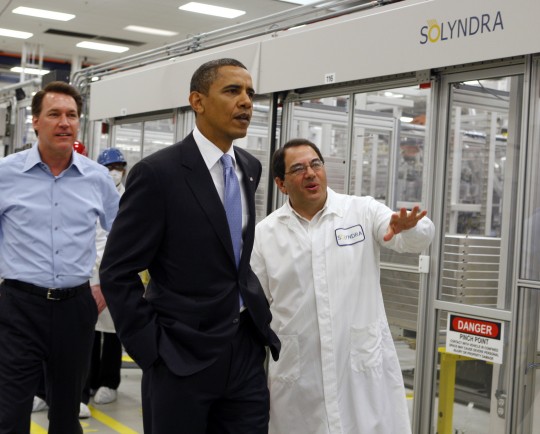In January 2011, White House officials supported the restructuring of Solyndra, the scandal-plagued solar company of the president’s clean energy initiative, despite warnings from multiple analysts in the White House’s Office of Management and Budget (OMB) that saving the company would be more costly than letting it die.
According to an investigation by the House Energy and Commerce Committee, senior officials in the OMB did not discourage the Department of Energy (DOE) from proceeding to restructure Solyndra’s loan so private investors would be paid back ahead of taxpayers, should the company fail. The Washington Post reports:
The restructuring went forward, but within months Solyndra failed anyway, leaving federal taxpayers on the hook for much of the half-billion-dollar federal loan. Now, a year after the company’s collapse, debate continues over whether the refinancing plan was legal or a wise investment. Last week, Solyndra’s final liquidation plan estimated that the government will recover just $24 million of the $527 million that taxpayers lent to the company.
Details about the debate emerge in internal government documents. They show that Energy Department officials argued that Solyndra might be able to pull out of its downward spiral if given an emergency infusion of cash. …
Documents show that in January 2011, when Solyndra was in technical default on its loan, OMB analyst Kelly Colyar concluded that if the company were immediately liquidated, taxpayers would lose $141 million. If the loan were restructured and more money were released to Solyndra, she estimated, a subsequent default would cost taxpayers $385 million. The loss was attributable in part to allowing private investors to recover some of their money first.
One such private investor, and one of Solyndra’s biggest is Oklahoma billionaire, George Kaiser, a major fundraiser for the president.
Colyar was not alone in her reservations about Solyndra, the Post reports:
A colleague at the OMB agreed, saying the analysis "confirms our earlier concern that DOE’s restructuring could effectively result in higher costs than liquidation." He added that, given the project’s high visibility, "DOE is likely to be very sensitive about optics if it should default."
OMB analysts also questioned whether the bailout would be enough to save Solyndra, considering that cheap solar panels from overseas had begun flooding the market. "With increasing competition from China, and other low-cost competitors, it wasn’t clear how Solyndra would be able to achieve the scale-up and margins needed" to survive, one e-mail said."
